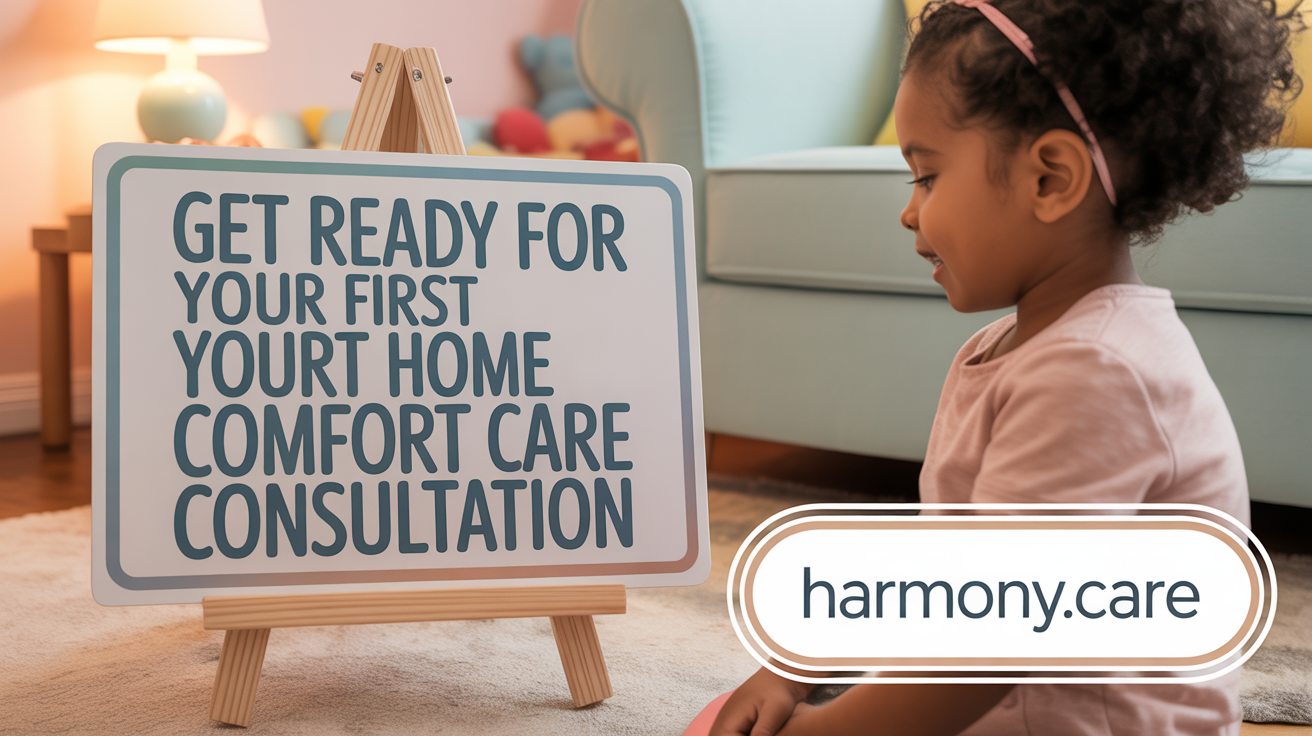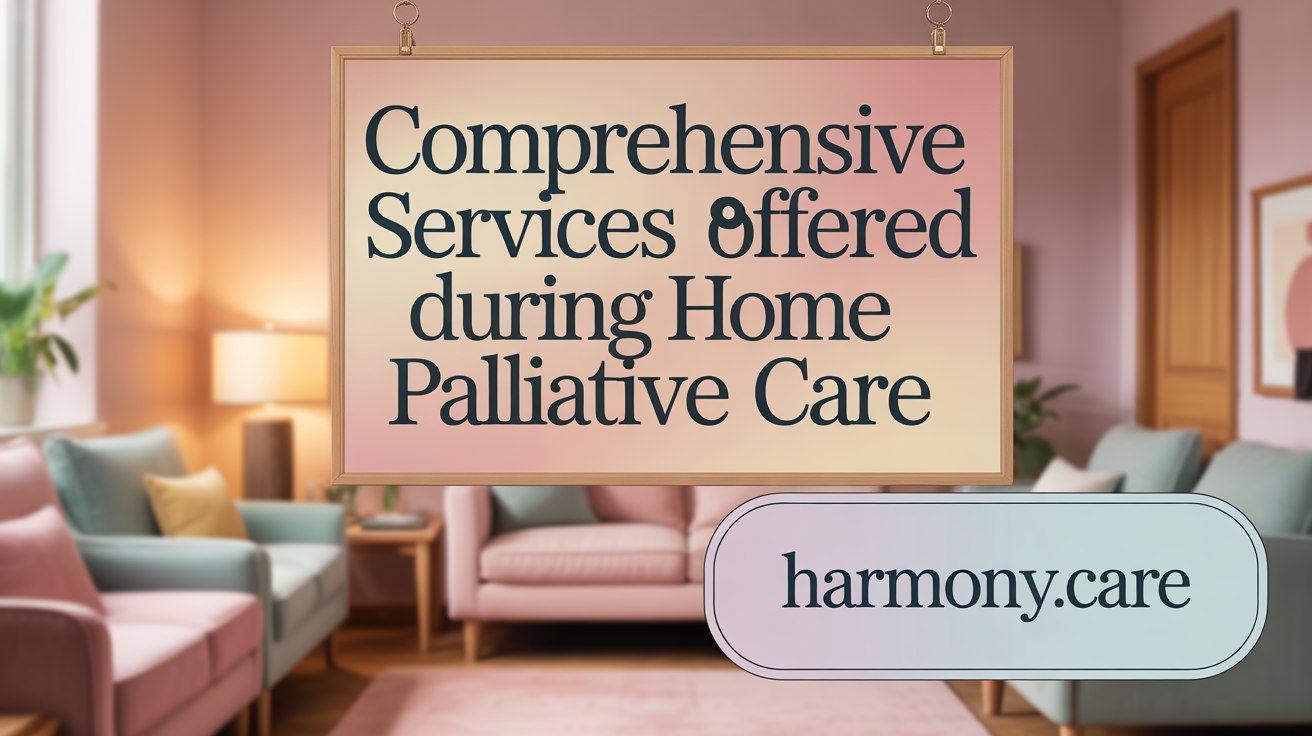Introduction to Home Palliative Care Consultation
Palliative care at home offers specialized medical and supportive services tailored for individuals facing serious illnesses, aiming to improve quality of life in the comfort of their own residence. This article outlines what patients and families can expect during a palliative care consultation at home, detailing the process, services, benefits, and roles of healthcare providers, helping readers prepare for this important step in managing complex health conditions with dignity and personalized attention.
What is Palliative Care at Home and Who is it For?

What is palliative care at home?
Palliative care at home is specialized medical support provided directly in a patient's residence. It is designed for individuals living with serious illnesses who prefer to stay in their familiar environment rather than in a hospital or care facility. A dedicated team of healthcare professionals—including doctors, nurses, social workers, and sometimes spiritual or occupational therapists—visit the patient's home to manage symptoms, control pain, and reduce illness-related stress.
This form of care focuses on enhancing the quality of life by addressing physical, emotional, spiritual, and social needs. The team collaborates closely with the patient and their family to create personalized care plans that support ongoing treatments like chemotherapy, dialysis, or oxygen therapy. There is also support for advance care planning and emotional or spiritual guidance.
Services typically include symptom monitoring, medication management, assistance with daily activities, nutritional advice, and caregiver support. Many insurance plans—including Medicare, Medicaid, and private insurance—cover these services. The main objective is to provide comfort and dignity, allowing patients to spend their final or ongoing years in the place they feel most secure and relaxed while reducing hospital visits and emergency care.
How does palliative care at home differ from other care models such as hospice?
While both palliative care at home and hospice aim to improve comfort and relieve suffering, they serve different purposes based on the patient's disease stage and prognosis.
Palliative care at home can begin at any point after diagnosis of a serious condition and is suitable for any stage of illness. It supports ongoing treatments alongside efforts to improve quality of life. Patients receiving palliative care may still pursue or continue curative treatments, and the focus remains on symptom relief and emotional support.
In contrast, hospice care is specifically for patients nearing the end of life—typically with a prognosis of six months or less—when curative treatments are no longer effective or desired. Hospice emphasizes comfort, dignity, and emotional support in the final stages of life. It can also be provided at home or in specialized facilities.
In summary, palliative care at home offers ongoing support throughout the illness, whereas hospice is a specialized form of palliative care reserved for the terminal phase. Both aim to respect patient wishes, enhance quality of life, and provide comprehensive support from a multidisciplinary team.
Which conditions and patients are suitable for home-based palliative care?
Home-based palliative care is appropriate for adults of any age suffering from serious, chronic, or life-limiting illnesses. Common conditions include cancer, heart disease, chronic obstructive pulmonary disease (COPD), kidney disease, neurological disorders such as Parkinson’s disease, Amyotrophic Lateral Sclerosis (ALS), and advanced stages of Alzheimer's disease.
Patients experiencing uncontrolled symptoms like pain, shortness of breath, fatigue, nausea, or emotional distress benefit significantly from home palliative services. The care can help manage complex medication regimens, support mobility and activities of daily living, and provide emotional or spiritual assistance. It is especially beneficial for those who prefer to remain in their homes and for whom hospital stays are either undesirable or difficult.
Eligibility depends on clinical assessments, the patient’s health status, and their personal preferences. Key indicators for initiating home-based palliative care include worsening functional status, difficulty managing symptoms at home, emotional or psychological distress, and a desire for spiritual or cultural support.
Who is involved in the multidisciplinary team?
A successful home-based palliative care program involves a multidisciplinary team providing comprehensive support. This team usually includes:
| Role | Responsibilities | Additional Details |
|---|---|---|
| Palliative Care Physician | Overseeing medical treatment, symptom management | Coordinates therapies and medication plans |
| Nurse | Conducts home visits, monitors symptoms | Adjusts medications, provides emotional support |
| Social Worker | Offers emotional support, counseling | Assists with resources and coping strategies |
| Spiritual Care Provider | Addresses spiritual needs and guidance | Supports cultural or religious considerations |
| Therapists (Physical, Occupational) | Helps maintain mobility and independence | Provides tailored exercises |
| Pharmacists | Manages medication supplies and advice | Ensures effective medication use |
This team works together to tailor interventions to each patient's unique needs, ensuring holistic and continuous care.
How is home palliative care different from other models?
The main distinction of home-based palliative care lies in its setting and scope.
- Location: Delivered in the comfort of the patient's home, promoting emotional well-being and familiarity.
- Scope: Focused on symptom relief, emotional and spiritual support, and improving quality of life.
- Timing: Can begin early in the illness, alongside ongoing treatments, unlike hospice which is end-of-life only.
- Coverage: Often covered by insurance plans, making it accessible for many patients.
While hospice care is focused on end-of-life comfort after curative options have been exhausted, palliative care at home supports the patient throughout their illness journey, emphasizing personal preferences and continuous support.
More Information: Searching for
Starting and Preparing for a Home Palliative Care Consultation

When and how should palliative care at home be started?
Palliative care at home should be introduced early in a serious illness, ideally soon after diagnosis or when symptoms start to interfere with daily life. Starting early helps manage symptoms proactively, supports emotional well-being, and allows for thorough planning of ongoing care.
To begin, patients should consult with their healthcare providers, who can assess medical needs and determine if palliative care is appropriate. Providers typically refer patients to specialized home-based palliative teams that include doctors, nurses, social workers, and other specialists. These teams work closely with the patient’s primary care team to craft a personalized plan focused on symptom relief, emotional and spiritual support, and respecting patient preferences.
Introducing palliative care during earlier stages of illness can improve comfort, maintain dignity, and enhance overall quality of life, making it a vital part of comprehensive healthcare management.
Referral and eligibility criteria
Eligibility for home palliative care generally involves having a serious, chronic, or life-limiting illness such as cancer, heart disease, or neurological conditions. Patients are usually referred by their primary care doctor or specialist after an assessment of their physical symptoms, emotional distress, and care needs.
Key indicators for initiating palliative care include uncontrolled pain or symptoms, declining functional status, emotional or spiritual distress, and a desire for supportive services. Patients typically need a prognosis of more than six months and are not necessarily at the end of life, as palliative care can be provided alongside curative treatments.
Healthcare providers evaluate these criteria to ensure the right timing for starting palliative support, aiming to improve patient comfort and facilitate informed decision-making.
Steps to prepare for the first consultation including gathering medical information and setting goals
Preparation is essential for an effective initial palliative care visit at home. Patients and families should gather relevant medical documents, such as recent test results, medication lists, and advance directives.
Creating a list of current symptoms, concerns, and questions helps make the most of the consultation, ensuring that vital issues are addressed. It’s also helpful to write down personal goals, preferences for treatment, and any values that are important in decision-making.
During the visit, the care team will review this information, discuss care options, and establish goals tailored to the patient’s needs. Clarifying these goals early ensures that the care plan aligns with what matters most to the patient and their family.
Role of family and caregiver involvement
Family members and caregivers play a crucial role in home palliative care. They provide emotional support, assist with daily activities, and help communicate patient preferences.
Preparing for the consultation involves involving family in discussions about care goals and asking questions about symptom management and upcoming needs.
Caregivers should be actively engaged during visits, sharing observations about the patient’s symptoms and concerns, and participating in developing the care plan. Open communication and collaboration foster a supportive environment, promoting the patient’s comfort and ensuring that care adheres to their wishes.
Overall, early planning and family involvement are fundamental to delivering compassionate, effective palliative care at home, helping patients live as comfortably and meaningfully as possible.
What to Expect During the Palliative Care Consultation at Home
 A palliative care consultation at home is a comprehensive evaluation designed to understand and address the physical, emotional, and spiritual needs of the patient. This first visit typically lasts around 60 to 90 minutes, during which a dedicated healthcare team — including doctors, nurses, and specialists — visits the patient in their familiar environment.
A palliative care consultation at home is a comprehensive evaluation designed to understand and address the physical, emotional, and spiritual needs of the patient. This first visit typically lasts around 60 to 90 minutes, during which a dedicated healthcare team — including doctors, nurses, and specialists — visits the patient in their familiar environment.
The initial step involves assessing the patient’s current symptoms such as pain, shortness of breath, fatigue, and nausea. The team also explores emotional and spiritual concerns, recognizing how these aspects influence overall well-being. They listen carefully to the patient’s story, goals, and worries, fostering trust and open communication.
Following this assessment, the team collaborates with the patient and family members to develop a personalized care plan. This plan focuses on symptom management, emotional support, and strategies to improve quality of life. It may include medication adjustments, complementary therapies like massage or acupuncture, and guidance on daily care activities.
Coordination with the patient’s primary healthcare providers is essential. The team discusses how to work together and often helps facilitate referrals to other specialists or services, ensuring that all aspects of care are harmonized. Diagnostic tests, such as blood work or imaging, may be recommended to monitor health status and tailor treatments effectively.
Additionally, the consultation covers educational support, helping patients and families understand the illness trajectory and treatment options. Emotional and spiritual support services, including chaplain visits or counseling, are offered based on individual preferences.
Overall, the goal of the home-based consultation is to foster comfort, relieve symptoms, and support the patient’s emotional and spiritual resilience. It ensures that care remains person-centered, continuous, and responsive to changing needs, allowing individuals to stay in their preferred environment while receiving holistic support.
Services and Support Provided During Home-Based Palliative Care

What services are provided during a palliative care consultation at home?
In a home palliative care consultation, a dedicated team of healthcare professionals works together to deliver a broad range of services tailored to the patient’s needs. The initial assessment involves reviewing medical history, symptoms, medications, and diagnostic tests, such as blood or imaging studies, to evaluate physical health.
Symptom management is a core component, addressing issues like pain, anxiety, shortness of breath, fatigue, nausea, and loss of appetite. Medications are carefully managed, and supplementary therapies such as massage, acupuncture, or music therapy may be incorporated to support symptom relief.
Emotional, spiritual, and psychosocial support are also provided. These services help patients and families cope with emotional distress, spiritual concerns, and psychological challenges associated with serious illness.
Another essential element is advance care planning, where discussions focus on the patient’s goals, preferences for care, and completion of advance directives. These conversations ensure that care aligns with what the patient values most.
Communication and advocacy support are part of the process, empowering patients and families to make informed decisions about ongoing treatment plans. Coordination with other healthcare providers ensures seamless care delivery.
To enhance accessibility and responsiveness, many programs offer virtual visits via video calls, providing consultations and follow-up support remotely. Additionally, 24/7 telephone support services are available for urgent issues or concerns that arise outside regular hours.
This comprehensive, personalized approach ensures that physical, emotional, spiritual, and practical needs are met, fostering comfort and dignity for patients in their familiar environment.
Benefits and Key Considerations for Home-Based Palliative Care

What are the benefits of receiving palliative care at home?
Receiving palliative care at home provides personalized support tailored to each patient's unique needs and values. It allows symptom management—such as pain, anxiety, and shortness of breath—to occur in a familiar and comfortable setting, improving overall quality of life. Home-based care also reduces unnecessary hospital trips, decreasing physical discomfort and risks associated with hospital stays.
Patients and families often experience better communication with care providers and emotional support, fostering shared decision-making and psychological comfort. Being in their own environment helps maintain independence and continues daily routines, ensuring that care aligns with the patient’s end-of-life wishes and personal dignity.
What are the typical stages and assessments involved in home-based palliative care?
The process begins with comprehensive in-home assessments of physical, emotional, spiritual, and social needs. These evaluations utilize tools like the Readiness for Home-Based Palliative Care Scale to gauge caregiver preparedness and identify potential gaps in care.
Based on the assessments, the team creates personalized care plans aimed at symptom relief, psychosocial support, and advance care planning. Regular monitoring occurs through scheduled home visits and follow-up calls to reassess symptoms, adjust medications, and support emotional and spiritual aspects.
Caregivers' readiness is also evaluated to ensure they can support the patient effectively, with ongoing training and resources provided. Transition assessments help determine when a patient might be suitable for hospice or other specialized care, ensuring a seamless, supportive care journey.
What is the role of healthcare providers during a palliative care consultation at home?
During a home consultation, healthcare providers focus on managing complex symptoms and addressing emotional, social, and spiritual needs. They establish trust and develop a close relationship with patients and their families, facilitating personalized and culturally sensitive care.
Providers coordinate with a multidisciplinary team—including doctors, nurses, social workers, and chaplains—to ensure comprehensive support. They educate families on symptom management strategies, medication use, and advance care planning, advocating for the patient's wishes.
Furthermore, care providers assess the safety and suitability of the home environment and support caregivers by offering practical advice and emotional reassurance. They act as advocates within the healthcare system, supporting informed decisions, and ensuring continuous, high-quality care tailored to evolving needs.
Conclusion: Embracing Comfort and Support Through Home Palliative Care
Home-based palliative care consultation represents a compassionate approach that prioritizes the patient's and family's experience during serious illness. By offering comprehensive assessment, personalized symptom management, continuous emotional and spiritual support, and coordinated care, it empowers patients to live with greater comfort in familiar surroundings. Understanding the consultation process, available services, and the collaborative roles of healthcare professionals can help families prepare and engage actively in care decisions. Early initiation and open communication enhance the benefits of this holistic care model, ultimately improving quality of life and ensuring dignity throughout the illness journey.
References
- All About Home-Based Palliative Care and How It Can Help You
- Palliative Care at Home: What to Expect for Your Loved One
- Can You Receive Palliative Care at Home? - Stony Brook Medicine ...
- What to Expect From a Palliative Care Consultation - Froedtert
- Palliative care at home: What to expect - The Live-in Care Company
- End of life and palliative care at home - Better Health Channel
- Home-Based Palliative Care Company | Palliative in Practice
- In-Home Palliative Care – 24/7 Care at Home - Hospice care
